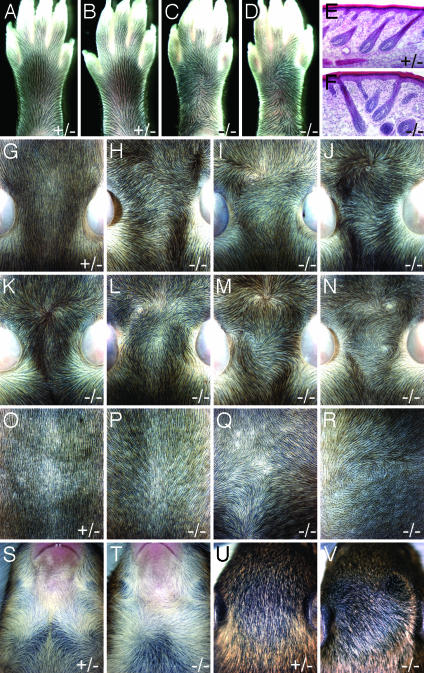Fig. 2.
Altered hair patterns in Fz6(-/-) mice. (A–D)WTand Fz6(-/-) hind feet at approximately P11. (A and C) Left feet. (B and D) Right feet. (E and F) Hematoxylin/eosin staining of frozen sections of skin on the dorsal surface of the hind foot at approximately P3 shows that Fz6(-/-) hair follicles exhibit normal morphology, but, in regions of aberrant patterning (shown in F), they are arranged in divergent orientation. (G–N) Hair on the dorsal surface of the head at approximately P9 shows the heterogeneity of hair patterning among Fz6(-/-) mice. The ears are seen at the lateral edges of each image; rostral is toward the top. (O–R) Hair on the back at approximately P8 shows a rostral to caudal orientation in WT (O), a uniform deviation toward the midline in Fz6(-/-) on a mixed C57BL6 × 129 background (P), and variable deviations on a pure 129 background (Q and R), including a whorl in R. Rostral is toward the top. (S and T) Hair whorls on the neck and chest at approximately P13. The pair of whorls in S is invariant among WT mice. Among Fz6(-/-) mice, the pattern is variable. (U and V) Hair on the dorsal surface of the head at approximately P13. In older mice, longer hair makes the altered hair pattern less apparent.

